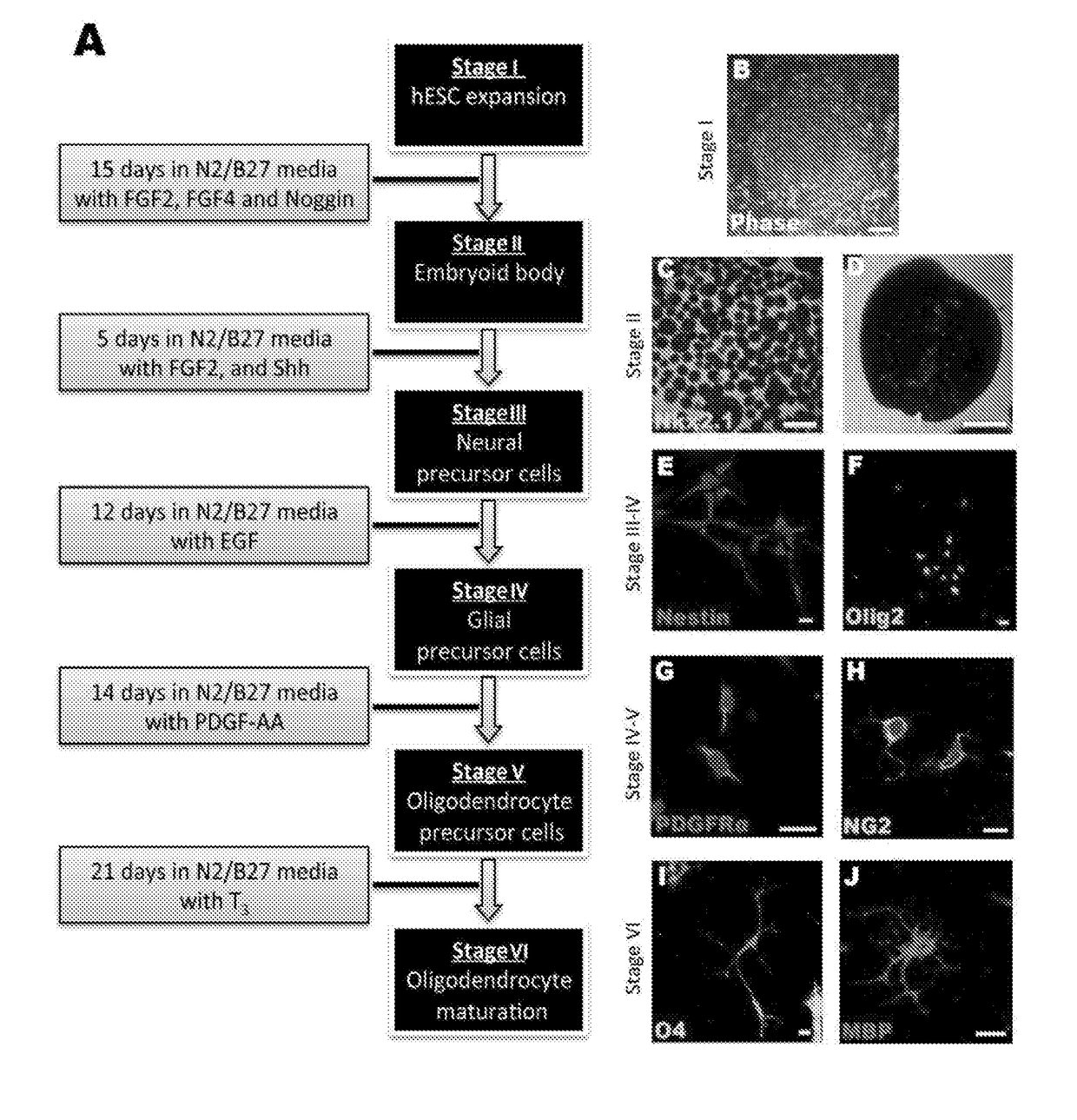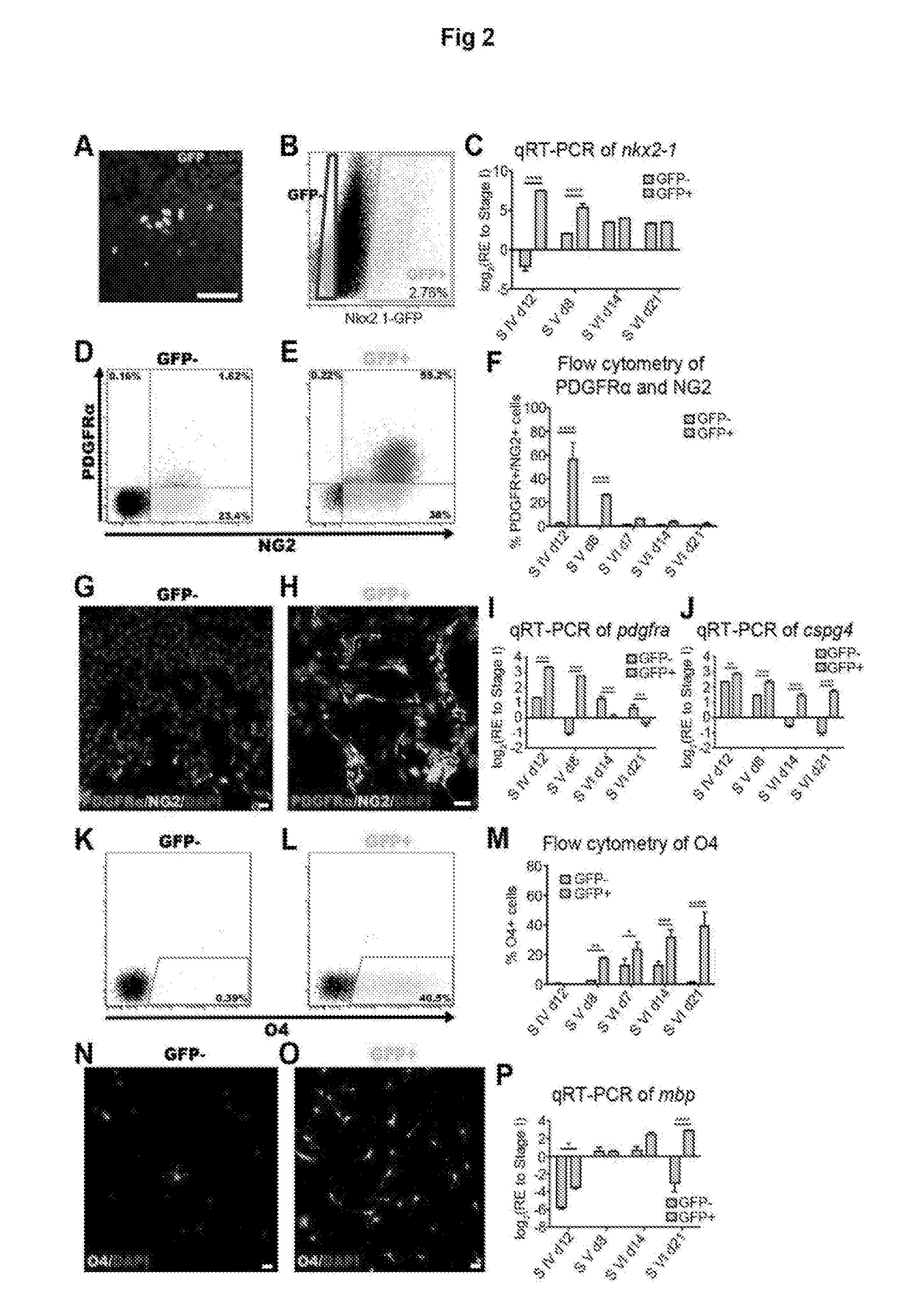Improvements in Oligodendroglial Cell Culturing Methods and in Methods for Treating Neurodegenerative Disorders by Using Thyroid Hormones or Analogues
a technology of oligodendroglial cells and culturing methods, which is applied in the field of improvement of oligodendroglial cell culturing methods and in the field of methods for treating neurodegenerative disorders by using thyroid hormones or analogues
- Summary
- Abstract
- Description
- Claims
- Application Information
AI Technical Summary
Benefits of technology
Problems solved by technology
Method used
Image
Examples
example 1
g MCT8 Deficiency in Oligodendrocytes
Introduction
[0181]Thyroid hormones (THs) play a vital role during mammalian embryonic brain development. The monocarboxylate transporters are now known to facilitate the transport of TH into cells to exert both genomic and non-genomic effects upon cellular development and metabolism (for review see Visser et al., 2008). The monocarboxylate transporter 8 (MCT8) has recently been identified as the candidate TH transporter, since the only substrates have been shown to be tri-iodothyronine (T3) and its pro-hormone thyroxine (T4) (Friesema et al., 2003; Kinne et al., 2010). In humans, mutations at the slc16a2 gene locus (encoding MCT8) cause the severe congenital X-linked psychomotor retardation, known as Allan-Herndon-Dudley syndrome (AHDS) (Dumitrescu et al., 2004; Friesema et al., 2004). Along with the increased serum levels of free-T3, developmentally delayed myelination shown by magnetic resonance imaging (MRI), is a common feature of this disord...
example 2
[0322]In this example, to potentiate oligodendrocyte differentiation, the potential role of DITPA as a therapeutic to overcome myelin abnormalities was studied by the inventors,
[0323]From this study, it seems that human oligodendrocytes require MCT8 for their maintenance, differentiation and myelination. Furthermore, the major finding of this study is that DITPA is capable of driving oligodendrocyte differentiation and myelination even in the absence of MCT8. To support in vitro oligodendroglial expression of MCT8, the inventors performed an in vivo expression study of MCT8 during postnatal mouse brain development. From this, a specific expression of MCT8 in postnatal OPCs within the sub-ventricular zone (SVZ) during postnatal development, mature oligodendrocytes within the corpus callosum (CC) white matter tract and adult OPCs within the optic nerve were found (FIG. 15). Of interest, MCT8 expression seems to be maintained in cells residing within the SVZ throughout development, sug...
example 3
on of DITPA for Oral Administration (1.5 mg / kg)
[0325]Example for body weight=25 kg.
[0326]Total DITPA to give per oral dosing=25 kg×1.5 mg / kg / day=37.5 mg DITPA. This amount would be divided into 3 equal portions, with each portion to be given approximately 8 hours apart on each day. Each portion amounts to a dose of 0.5 mg / kg / day, and for the 25 kg body weight is 12.5 mg DITPA.
The following describes the preparation of a mixture of DITPA for the 0.5 mg / kg dose.
Prepare 6 ml of the DITPA mixture as follows:
1. 15 mg of DITPA was placed into a glass vial.
2. 6 ml of vehicle solution was then added, and the glass vial was capped and the composition was mixed thoroughly with gentle shaking.
3. The composition was a syrupy mixture at a strength of 2.5 mg / ml.
4. The volume of the mixture required for administering the 12.5 mg portion for the 25 kg body weight is therefore, 12.5 mg / 2.5 mg.m1=5 ml.
FIG. 1 A is a chart showing body weight and volume of mixture required for the dose of 0.5 mg / kg. Th...
PUM
 Login to View More
Login to View More Abstract
Description
Claims
Application Information
 Login to View More
Login to View More - R&D
- Intellectual Property
- Life Sciences
- Materials
- Tech Scout
- Unparalleled Data Quality
- Higher Quality Content
- 60% Fewer Hallucinations
Browse by: Latest US Patents, China's latest patents, Technical Efficacy Thesaurus, Application Domain, Technology Topic, Popular Technical Reports.
© 2025 PatSnap. All rights reserved.Legal|Privacy policy|Modern Slavery Act Transparency Statement|Sitemap|About US| Contact US: help@patsnap.com



